1937 Sanborn Map of the Intersection of Fayetteville St. and East Pettigrew.
(Copyright Sanborn Map Company)
The African American Pilgrim Primitive Baptist Church was established near East Pettigrew and Fayetteville Sts. in the 1880s. Aside from a consistent listing in the city directories, there is very little information about this church, which, much like the white Primitive Baptist Church on Cleveland St. seems to have stood very much in the shadow of its more prominently holy neighbors. It was organized in 1883 by Elder Luke Webb, also pastor of the Mill Grove Primitive Baptist Church, 5 miles north of town.
Notably, this church was the location of the first "graded school" for African American children in Durham, established in 1885-6, before the first permanent structure - the Whitted School at Ramsey and Proctor Streets - was established. (The school had another interim stop on Red Cross St. between the two.)
The remainder of the eastern side of the 500 block of Fayetteville, part of the 'Sugar Hill' portion of the Hayti neighborhood, consisted mostly of two story, early 20th century residential structures. For whatever reason, these seem mostly absent from the urban renewal records, so I only have some representative shots.
(Courtesy The Herald-Sun Newspaper)
1940s aerial of the intersection of Fayetteville and East Pettigrew, looking northwest. The Primitive Baptist Church has the simple pitched roof, located on the near side of the intersection. The 500 block extended south to the intersection of Mobile Ave. (at the left side of the picture; it did not cross Fayetteville.)
507 Fayetteville, 1963.
(Courtesy Durham County Library / North Carolina Collection)
511 Fayetteville - likely late 1960s (demolition has already occurred around the structure.)
(Courtesy Durham County Library / North Carolina Collection)
These structures were demolished by the mid-1960s by the urban renewal program, with the intention of this becoming part of the Durham Freeway right-of-way. This block would span the Freeway approximately from exit ramp to exit ramp, hovering ~20-60 feet east of the current overpass.
Area of the 500 block of Fayetteville St., 10.05.08
Find this spot on a Google Map.
Hayti Streets, 1959.
Hayti Streets, 2007
35.987448 -78.896704

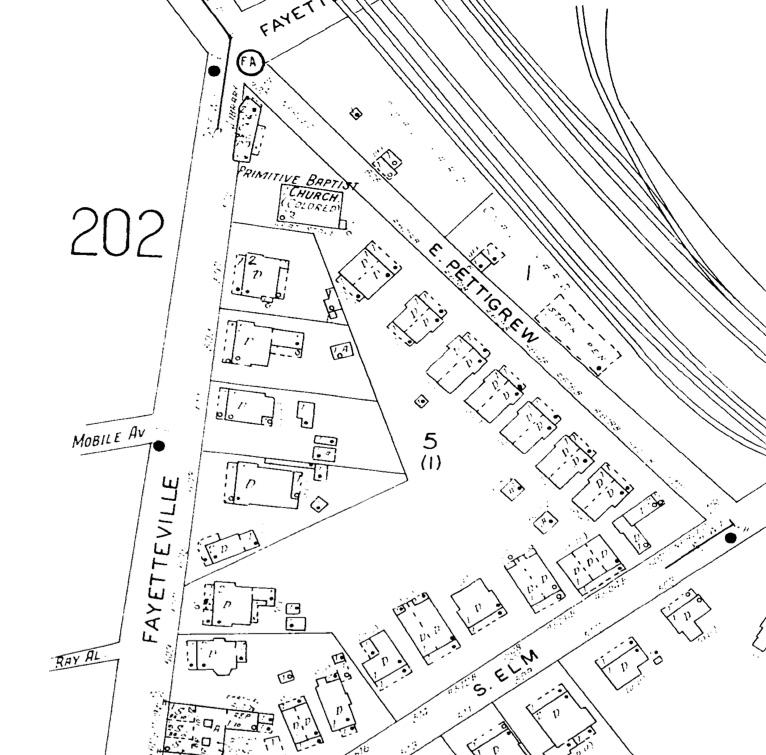
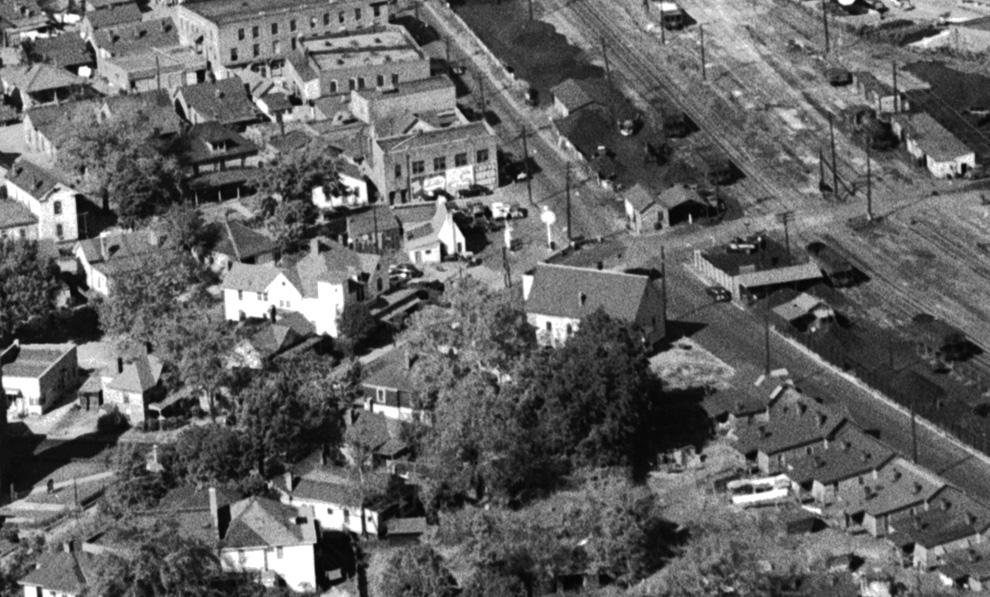
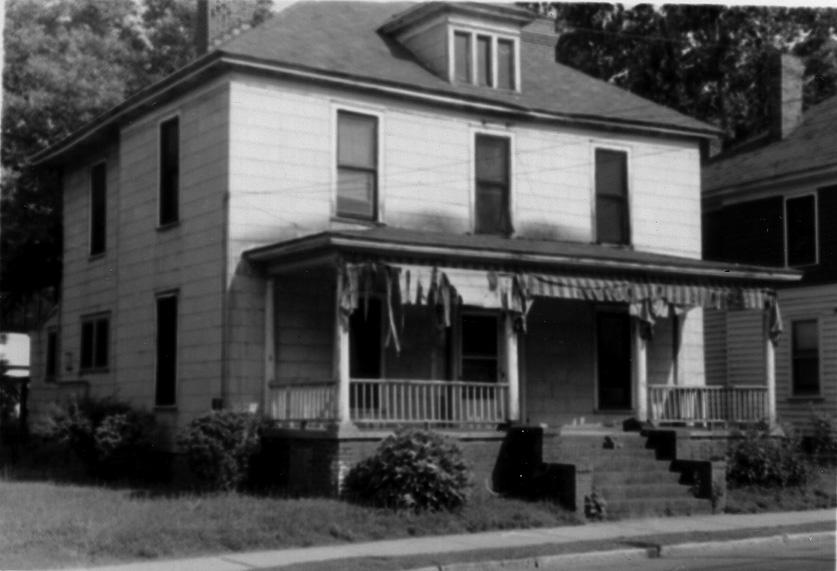
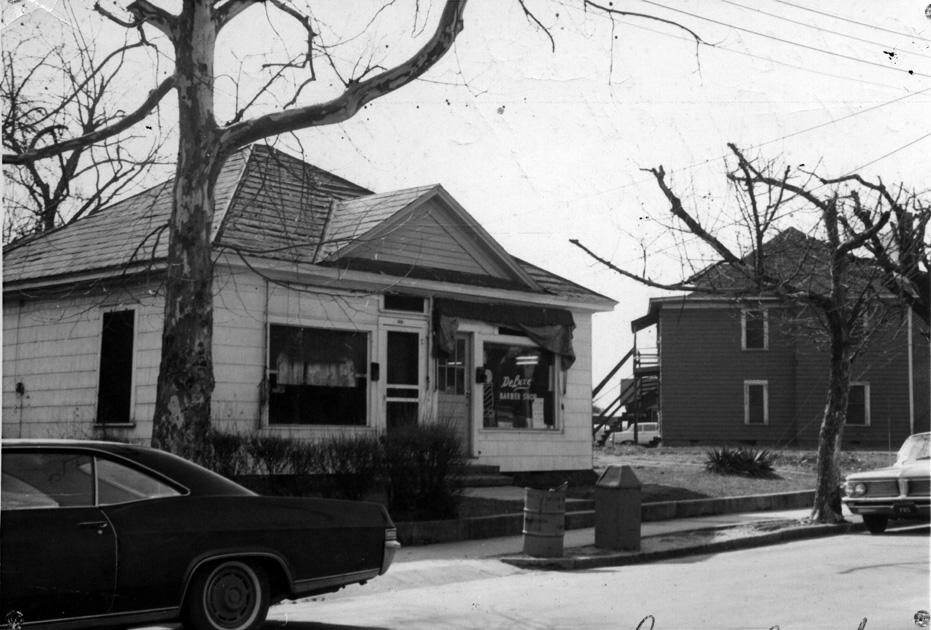
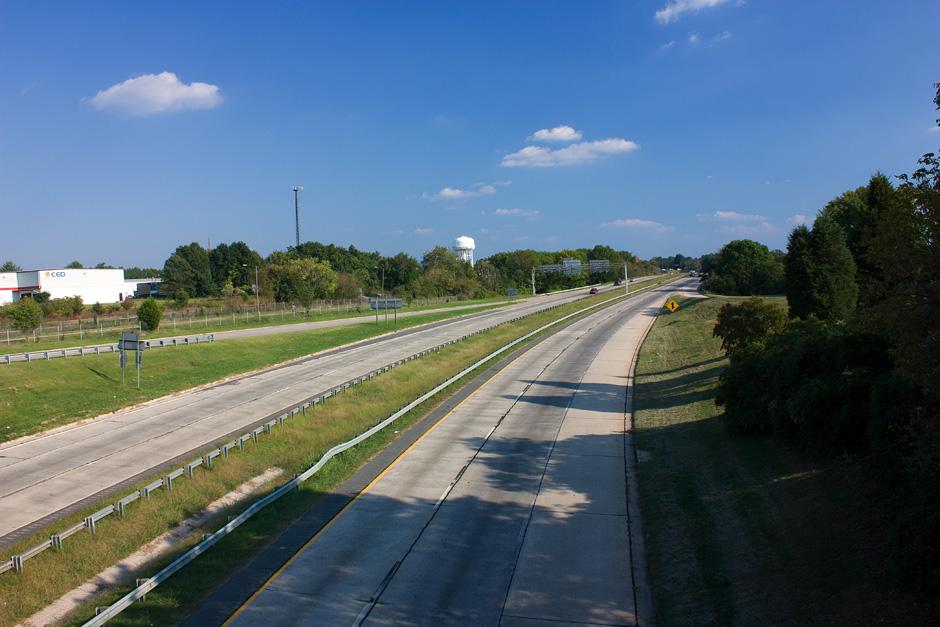
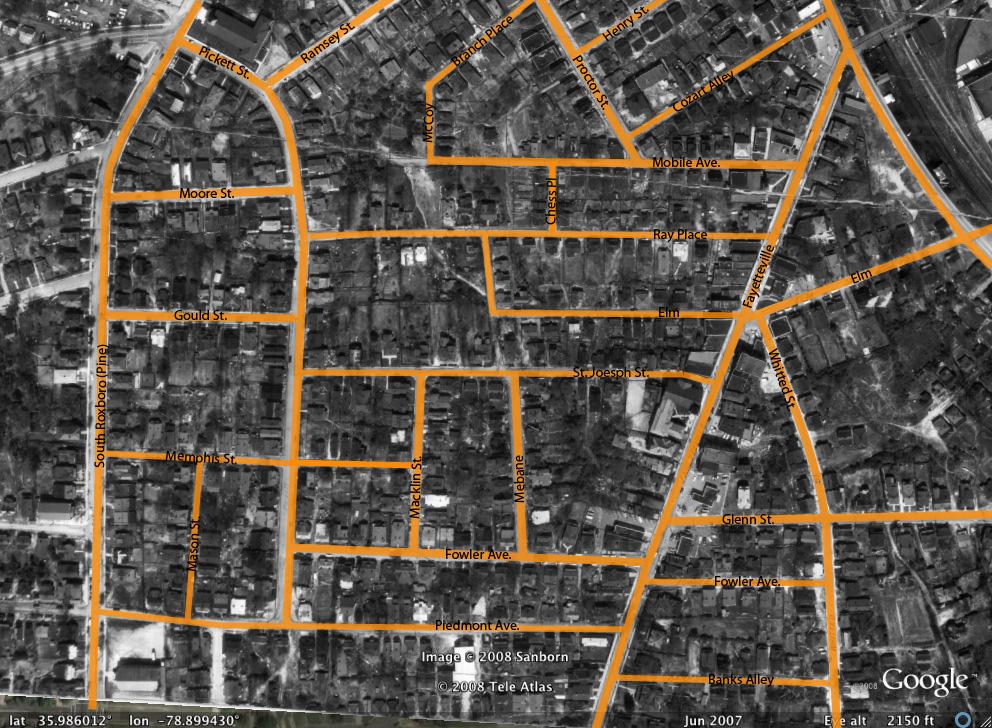
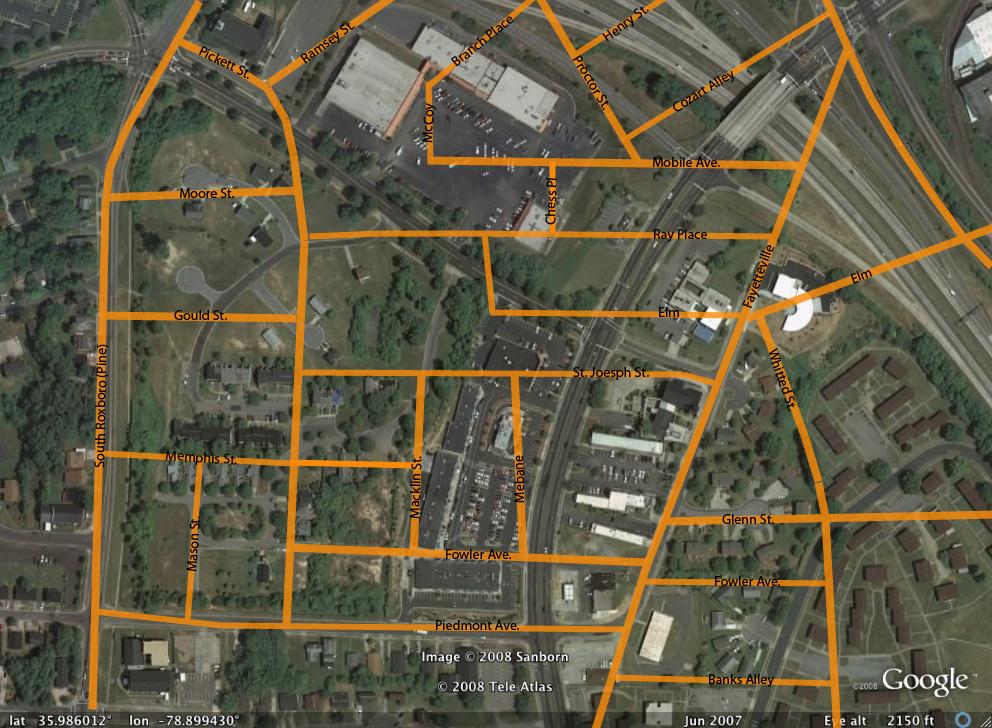
Comments
Submitted by Anonymous (not verified) on Wed, 10/8/2008 - 1:22pm
Cool! I like the historic>>modern map overlay!
thanks for anuthuh great post
Submitted by Anonymous (not verified) on Wed, 10/8/2008 - 2:30pm
Stunning, the scope of the destruction of a once high functioning society. The overlay today really highlights the scale of Durham's mistakes during "urban renewal."
Submitted by Gary (not verified) on Wed, 10/8/2008 - 2:52pm
I'm glad you appreciate it. One thing I like to emphasize in this is the less-than-accurate ascribing of the the destruction of Hayti to the Durham Freeway. While it may seem like a technical issue, I like to make clear that the vast majority of Hayti would still be around if it had just been the freeway. The freeway was destructive to downtown Durham, but Urban renewal is what really destroyed Hayti and much of downtown, and the primary reason for that was 'saving the city from blight' rather than highway creation.
GK
Submitted by slapstep (not verified) on Thu, 10/9/2008 - 12:19pm
I find the Hayti destruction more & more amazing every time you supply us with a new overlay. It’s just incredible. This overlay really shows the vast area of Hayti.
Thanks for another excellent post.
Submitted by Marsosudiro (not verified) on Tue, 6/1/2010 - 2:08am
Ugh. I've just gotten around to reading this post, and ugh.
Thanks for the reiteration of the lesson about urban renewal, not just the freeway.
Add new comment
Log in or register to post comments.